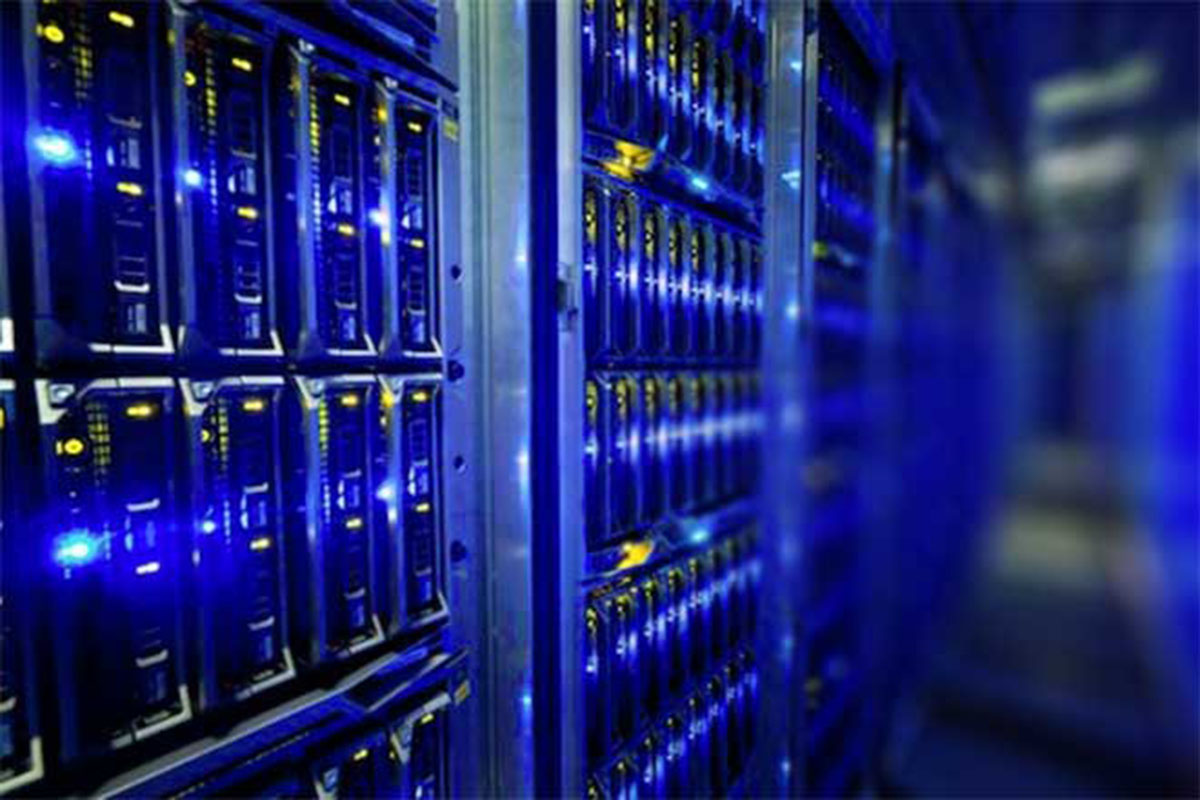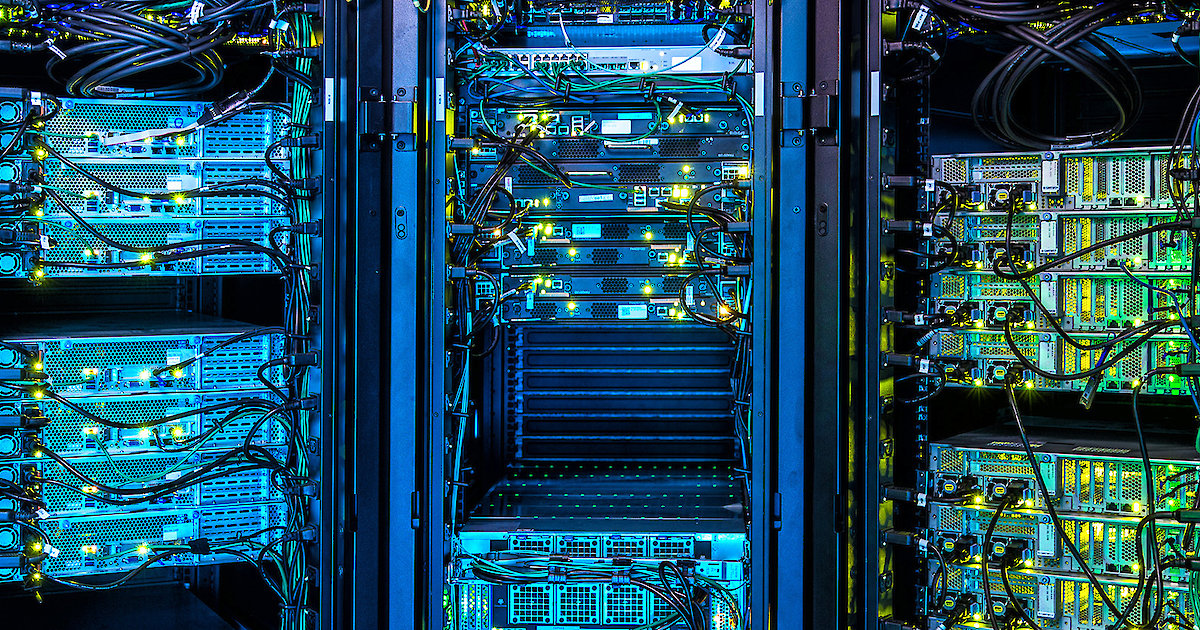What Is a Public IP Address?
A public IP address is a unique numerical label assigned to every device connected to a network that uses the Internet Protocol for communication. It serves as a distinctive identifier for devices such as computers, routers, and servers. Public IP addresses are globally recognizable and accessible across the internet.
Think of a public IP address as your device’s virtual home address on the internet. Just like a physical address helps mail carriers deliver packages to the correct location, a public IP address allows data packets to be correctly routed to and from your device across the vast network of interconnected devices.
Public IP addresses are necessary for establishing connections and exchanging data with other devices and services on the internet. They enable devices to send and receive information, browse the web, stream media, access online services, and engage in various online activities.
Public IP addresses are typically provided by Internet Service Providers (ISPs), who allocate them to users for a specific period or permanently. These addresses can be either dynamic or static.
A dynamic public IP address changes periodically, typically each time a device reconnects to the internet. On the other hand, a static public IP address remains constant, allowing for a stable connection and consistent accessibility. Static IP addresses are often used by businesses and organizations that host websites, run servers, or require remote access to their networks.
Public IP addresses are unique, meaning that no two devices can have the same address simultaneously. This uniqueness ensures that data reaches the intended destination without interference or confusion.
Overall, public IP addresses play a crucial role in facilitating communication and connectivity across the internet. They enable devices to establish direct connections, communicate with servers, and access various online resources. Without public IP addresses, the internet as we know it would not be possible.
How Does an IP Address Work?
An IP (Internet Protocol) address is a unique identifier assigned to devices connected to a network. It serves as a means of communication, allowing devices to send and receive data across networks, including the internet. Understanding how IP addresses work is essential for comprehending the intricacies of networking and internet connectivity.
IP addresses are binary numbers consisting of 32 bits in IPv4 (Internet Protocol version 4) or 128 bits in IPv6 (Internet Protocol version 6). These binary numbers are then represented in a more human-friendly format called dotted decimal notation, where each section of the address is separated by periods. For example, an IPv4 address might look like 192.168.0.1.
IP addresses operate at both the network layer (Layer 3) and the internet layer in the networking stack. When you send a request to access a website or an online service, your device uses its IP address to communicate with the server hosting that website or service.
The process of transmitting data via IP addresses involves packet switching. Data is divided into smaller units called packets, each with a specific destination IP address. These packets are then routed across various networks until they reach their destination. Each router along the way examines the destination IP address and decides the next hop for the packet, ensuring its proper delivery.
IP addresses are assigned in a hierarchical structure. The Internet Assigned Numbers Authority (IANA) manages the distribution of IP address blocks to regional Internet registries (RIRs). These RIRs then allocate IP addresses to Internet Service Providers (ISPs), who, in turn, assign them to individual devices or users.
Every device on a network has an IP address, which can be either private or public. Private IP addresses are used within local networks and are not accessible from the internet. Public IP addresses, on the other hand, are globally unique and allow devices to communicate with other devices and services on the internet.
In summary, IP addresses serve as unique identifiers that enable devices to communicate and transfer data across networks. Through the process of packet switching, devices can send and receive information, establishing connections and accessing various online resources. Without IP addresses, the seamless flow of data and internet connectivity that we rely on today would not be possible.
Different Types of IP Addresses
IP (Internet Protocol) addresses can be classified into different categories based on their purpose, scope, and accessibility. Understanding the different types of IP addresses is essential for managing networks and optimizing internet connectivity.
1. Public IP Address: A public IP address is globally unique and can be accessed from the internet. This type of address is assigned to devices that connect directly to the internet, allowing them to send and receive data to and from other devices, servers, and online services.
2. Private IP Address: A private IP address is used within a local network and is not directly accessible from the internet. It provides internal communication between devices within a network. Private IP addresses are commonly used in home networks, small offices, or local area networks (LANs).
3. Static IP Address: A static IP address is a permanent address that remains the same over time. It is manually assigned to a device and does not change, ensuring a stable and consistent connection. Static IP addresses are commonly used for servers, websites, and devices that require constant accessibility.
4. Dynamic IP Address: A dynamic IP address is temporary and can change each time a device connects to a network. It is automatically assigned by a Dynamic Host Configuration Protocol (DHCP) server. Dynamic IP addresses are commonly used in residential internet connections where there is a pool of available addresses that are assigned dynamically.
5. IPv4: IPv4 is the most widely used version of the IP addressing system. It uses a 32-bit address space, resulting in a limited number of assignable addresses. IPv4 addresses are represented in dotted decimal notation, such as 192.168.0.1. The scarcity of IPv4 addresses led to the development of IPv6.
6. IPv6: IPv6 is the newer version of the IP addressing system and uses a 128-bit address space. It provides a significantly larger number of assignable addresses to accommodate the growing number of devices connecting to the internet. IPv6 addresses are represented in hexadecimal notation with colons, such as 2001:0db8:85a3:0000:0000:8a2e:0370:7334.
By understanding the different types of IP addresses, network administrators can effectively manage their networks, assign addresses to devices, and control connectivity. It is important to consider the specific requirements of the network and devices when selecting and configuring IP addresses for optimal performance and security.
What Is a Public IP Address?
A public IP address is a unique numerical label assigned to every device connected to a network that uses the Internet Protocol for communication. It serves as a distinctive identifier for devices such as computers, routers, and servers. Public IP addresses are globally recognizable and accessible across the internet.
Think of a public IP address as your device’s virtual home address on the internet. Just like a physical address helps mail carriers deliver packages to the correct location, a public IP address allows data packets to be correctly routed to and from your device across the vast network of interconnected devices.
To understand the concept of a public IP address, we can compare it to a private IP address. A private IP address is assigned to devices within a local network and is not directly accessible from the internet. Private IP addresses allow for internal communication between devices on the same network, such as in a home or office setting.
In contrast, a public IP address is assigned to the device by the Internet Service Provider (ISP) and is visible to the outside world. It enables devices to establish connections and exchange data with other devices and services on the internet. This allows us to browse the web, send emails, stream media, access online services, and engage in various online activities.
Public IP addresses are unique, meaning that no two devices can have the same address simultaneously. This uniqueness ensures that data reaches the intended destination without interference or confusion. Without public IP addresses, devices would not be able to communicate directly with each other across the internet.
Public IP addresses are typically assigned dynamically or statically. With dynamic IP addressing, the ISP assigns a temporary address to the device each time it connects to the internet. This allows the ISP to efficiently manage their pool of available IP addresses. Static IP addresses, on the other hand, are manually assigned to a device and remain constant over time. Static IP addresses are often used by businesses, organizations, and servers that require a stable and consistent connection.
To summarize, a public IP address is a unique identifier assigned to a device connected to the internet. It allows devices to establish connections, exchange data, and access online services. Public IP addresses play a crucial role in facilitating communication and connectivity across the internet, enabling us to enjoy the multitude of online experiences available today.
Why Do You Need a Public IP Address?
A public IP address is essential for several reasons, as it enables devices to connect to the internet, communicate with other devices, and access various online services. Let’s explore why having a public IP address is crucial for internet connectivity.
1. Direct Communication: A public IP address allows devices to establish direct connections with other devices and services on the internet. This is important for activities such as video conferencing, online gaming, peer-to-peer file sharing, and accessing remote servers. Without a public IP address, devices are limited to communication within local networks.
2. Internet Browsing: When you browse the web, your device sends requests to the websites you want to visit. The websites then send back the requested data packets to your device’s public IP address. Without a public IP address, you would not be able to access websites or retrieve online content.
3. Email and Messaging: Public IP addresses are necessary for sending and receiving emails, using messaging applications, and communicating over the internet. Your email server and messaging platforms need your public IP address to deliver messages to your device and vice versa.
4. Streaming and Online Media: Services like streaming platforms and online media providers rely on public IP addresses to deliver content to your device. Whether you’re watching a movie, listening to music, or streaming your favorite shows, a public IP address is necessary for accessing these services.
5. Accessing Online Services: Many online services require a public IP address for authentication and authorization purposes. This includes online banking, cloud storage, e-commerce, social media platforms, and more. Without a public IP address, you may not be able to access these services securely.
6. Remote Connectivity: Public IP addresses are crucial for establishing remote connections to networks and devices. This allows you to access your work computer from home, connect to your home network while traveling, or remotely manage servers and network devices. Without a public IP address, remote connectivity would not be possible.
In summary, a public IP address is essential for enabling devices to connect to the internet, establish direct connections with other devices and services, and access various online resources. It facilitates communication, allows for online activities, and enables remote connectivity. Public IP addresses are a fundamental component of internet connectivity that enables us to take full advantage of the countless possibilities offered by the digital world.
How Are Public IP Addresses Assigned?
Public IP addresses are assigned by Internet Service Providers (ISPs) to devices connected to their networks. Let’s explore how the assignment of public IP addresses takes place.
1. Allocation by Internet Assigned Numbers Authority (IANA): The Internet Assigned Numbers Authority (IANA) is responsible for managing the allocation of IP address blocks globally. IANA assigns IP address blocks to regional Internet registries (RIRs) based on geographical locations.
2. Allocation by Regional Internet Registries (RIRs): RIRs, such as the American Registry for Internet Numbers (ARIN) and the Asia-Pacific Network Information Centre (APNIC), receive IP address blocks from IANA. Based on the demand and requirements of their respective regions, RIRs allocate IP address blocks to Internet Service Providers (ISPs) within their jurisdiction.
3. Assignment by Internet Service Providers (ISPs): ISPs are responsible for assigning public IP addresses to the devices that connect to their networks. ISPs receive a pool of public IP addresses from RIRs and use various methods to distribute these addresses among their customers.
Dynamic Host Configuration Protocol (DHCP) is one common method used by ISPs to assign public IP addresses dynamically. When a device connects to the ISP’s network, a DHCP server dynamically assigns an available public IP address to that device from the ISP’s pool of addresses. This IP address may change each time the device connects or after a specific lease period.
For businesses or organizations that require a stable and consistent connection, ISPs may assign static IP addresses. In this case, the ISP manually assigns a specific public IP address to the device, and it remains the same over time. Static IP addresses are commonly used for hosting websites, email servers, and accessing remote networks.
4. IPv4 Address Exhaustion: It’s important to note that with the growth of the internet and the limited availability of IPv4 addresses (32-bit), the internet community has transitioned to IPv6 (128-bit). IPv6 provides a significantly larger pool of addresses to accommodate the increased number of devices connecting to the internet.
In summary, public IP addresses are assigned through a hierarchical process, starting from the allocation by IANA to RIRs, who then distribute the addresses to ISPs. ISPs use various methods, such as DHCP or static assignment, to assign public IP addresses to devices on their networks. The transition to IPv6 has helped alleviate the shortage of IP addresses and allows for a greater number of unique addresses to be assigned to devices.
Dynamic vs. Static IP Addresses
IP (Internet Protocol) addresses can be classified as dynamic or static, depending on how they are assigned and whether they change over time. Understanding the differences between dynamic and static IP addresses is crucial for managing network connections and optimizing internet accessibility.
Dynamic IP Addresses:
Dynamic IP addresses are assigned to devices by a Dynamic Host Configuration Protocol (DHCP) server. They are temporary and can change each time a device connects to the network or after a predefined lease period. Here are some key characteristics of dynamic IP addresses:
- Assigned automatically by the network’s DHCP server upon device connection.
- Temporary and subject to change after a certain period or on each network connection.
- Cost-effective as different devices can share the same IP address over time.
- Suitable for home networks and environments where a large number of IP addresses are not needed.
- Makes it more challenging for external sources to connect directly to the device due to the changing IP address.
Static IP Addresses:
Static IP addresses are manually assigned to a device and remain constant over time. They are typically configured within the device’s network settings and offer several advantages over dynamic IP addresses. Here are some characteristics of static IP addresses:
- Assigned manually by network administrators or configured directly within the device’s settings.
- Permanent and do not change unless manually reconfigured.
- A more reliable option for devices that require constant accessibility, such as servers, websites, or devices used in remote access scenarios.
- Facilitates better connectivity for remote access and hosting services.
- Allows for easier tracking and management of devices within a network.
- Generally requires an additional cost from the Internet Service Provider (ISP) for the allocation of a static IP address.
Choosing between dynamic and static IP addresses depends on several factors, including the specific requirements of the network and the devices connected to it. In situations where flexibility and cost-effectiveness are important, dynamic IP addresses are a suitable choice. On the other hand, when devices require constant accessibility and stable connections, static IP addresses offer greater reliability.
Moreover, with the increasing transition to IPv6 (Internet Protocol version 6) and its larger address space, the need for dynamic IP addresses may decrease. IPv6 provides an abundance of unique addresses, reducing the scarcity concerns associated with IPv4 and potentially making static IP addresses more easily available.
In summary, dynamic IP addresses are automatically assigned and subject to change, while static IP addresses are manually assigned and remain constant. The choice between dynamic and static IP addresses depends on factors such as network requirements, device accessibility needs, and the availability of allocated IP addresses from the Internet Service Provider.
Benefits and Limitations of Public IP Addresses
Public IP addresses offer numerous benefits in terms of connectivity and accessibility, but they also come with certain limitations. Understanding both the advantages and limitations of public IP addresses is crucial for managing networks and optimizing internet connectivity.
Benefits of Public IP Addresses:
- Direct Connectivity: Public IP addresses enable devices to establish direct connections with other devices and services over the internet. This allows for seamless communication, data transfer, and access to various online resources.
- Global Accessibility: With a public IP address, devices can be accessed from anywhere on the internet. This is crucial for activities like remote access, hosting websites or servers, and facilitating remote collaboration.
- Flexibility: Public IP addresses allow for a wide range of online activities, such as browsing the web, sending and receiving emails, streaming media, and accessing online services. The flexibility provided by public IP addresses enhances productivity and enables a diverse range of online experiences.
- Identification and Security: Public IP addresses serve as unique identifiers for devices, ensuring that data is routed correctly and reaches the intended destination. Public IP addresses also play a role in security, enabling firewalls and network security measures to monitor and control incoming and outgoing traffic.
Limitations of Public IP Addresses:
- Scarcity: The limited availability of IPv4 public IP addresses (32-bit) has led to scarcity issues. This scarcity has prompted the transition to IPv6 (128-bit) addresses to provide a larger pool of unique addresses for the ever-growing number of devices connecting to the internet.
- Exposure to Attacks: Public IP addresses, being directly accessible from the internet, expose devices to potential security threats. Attackers may target public IP addresses to exploit weaknesses in devices, networks, and services. Implementing robust security measures is essential to mitigate these risks.
- Additional Costs: Some Internet Service Providers (ISPs) may charge additional fees for obtaining a static public IP address. While dynamic IP addresses generally come with the internet service package, static IP addresses may incur extra costs to maintain a consistent and dedicated IP address.
- Decentralized Control: Public IP addresses are allocated by ISPs, which means that there is a decentralized control over their assignment. ISPs have control over IP address allocations and may implement specific policies or limitations that can impact the availability and usage of public IP addresses.
Despite these limitations, public IP addresses remain vital for establishing connections, accessing online resources, and facilitating effective communication across the internet. They enable global connectivity, enhance productivity, and drive innovation in the digital world.
Conclusion
Public IP addresses are essential components of internet connectivity, enabling devices to establish direct connections, communicate with other devices, and access online resources. They serve as unique identifiers, allowing data to be routed accurately across the vast network of interconnected devices.
Public IP addresses provide numerous benefits, including direct connectivity, global accessibility, flexibility for various online activities, and identification and security measures. They allow devices to browse the web, send emails, stream media, and access online services. Public IP addresses also play a crucial role in enabling remote connectivity and facilitating the hosting of websites and servers.
However, public IP addresses also have limitations. The scarcity of IPv4 addresses and the exposure of devices to potential security threats are important considerations. Additional costs may be involved in obtaining a static public IP address, and there is a decentralized control over IP address assignment.
With the transition to IPv6 and its larger address space, the limitations of public IP addresses are being addressed to a certain extent. IPv6 provides a solution for the scarcity of IP addresses and offers enhanced security features.
In conclusion, public IP addresses are essential for the functioning of the internet and enable seamless communication, connectivity, and access to online resources. While they have limitations, the benefits they provide outweigh these challenges, making public IP addresses a fundamental component of our interconnected digital world.

























